Below are descriptions of the 17 regions and themes available for Creator Coast Nova Scotia. Please read each of them carefully, especially noting the dates of travel. After you’ve made your top three choices, please record them in the application form.
1/ Acadian Culture & the Congrès Mondial Acadien 2024
The spirit of l’Acadie runs deep in Nova Scotia. Vivid reminders of the intrepid French settlers who first claimed Nova Scotia as their home in the seventeenth century can be found throughout the province. From the brightly painted houses and towering churches of the seaside villages to the quiet beauty of the masterfully created hooked rugs, Acadian culture infuses much of Nova Scotia with its vibrancy, jaunty rhythms and the romance of its history and language. Explore Acadian history through historical sites, culture and language, genealogy, music, food, and crafts while travelling throughout Nova Scotia.
This visit will focus on exploring the Acadian culture and communities in Southwest Nova Scotia from Grand Pré to Clare to the Pubnico region during the Congrès Mondial Acadien 2024 – a celebration of the Acadian diaspora from across the world!
Highlights include:
- CMA Opening Day Concert on August 10 at Université Sainte-Anne.
- National Acadian Day on August 15.
- Take part in culinary demonstrations, join a kitchen party or taste rappie pie, a traditional dish from the region, as well as the seafood for which it is renowned.
- The different communities of the host region will put on events as part of the CMA 2024 that will highlight their traditions, talents and local know-how.
- Accommodations: Planter’s Ridge Winery, Driftwood by the Sea Dome, Argyler Lodge, Trout Point Lodge.
Region: Annapolis Valley, Yarmouth & Acadian Shores
Dates: Arrive on Aug 8/9; Depart on Aug 16/17

2/ Connect with Indigenous Culture in Nova Scotia
Pjila’si (welcome)! For more than 13,000 years, the Mi’kmaq have called this beautiful land home and enriched us with legends, art, music, spirituality, history, and language. Connect with Indigenous people, stories, and special places across Mi’kma’ki.
Highlights include:
- 3 nights in Sydney to explore Membertou Heritage Park, Mi’kmaw Interpretive Centre at the Fortress of Louisbourg National Historic Site and Eskasoni Cultural Journeys.
- Explore Millbrook Cultural & Heritage Centre near Truro.
- 2 nights in an oTENTik at Kejimkujik National Park & National Historic Site, including Petroglyph Tour, Mi’kmaw encampment, Stories of the Stars Dark Sky, Birch Bark Canoe Building with Todd Labrador and more (basic camping gear provided).
- Option for a night or 2 in Halifax to explore the city and the Indigenous exhibits at the Museum of Natural History, Art Gallery of Nova Scotia and Halifax Citadel National Historic Site.
Region: Province-wide
Dates: Arrive on Aug 29/30; Depart on Sept 6/7

3/ Vineyard Escapes
Nova Scotia has a long and rich tradition of growing grapes for wine that dates back to the 1600s, when this was one of the first areas to cultivate grapes in North America. The climate and soil conditions in Nova Scotia favour unique and distinctive grape varietals. Sample our appellation wine – Tidal Bay – a wine that brilliantly reflects the terroir, coastal breezes and cooler climate of its birthplace. Taste L’Acadie Blanc, Seyval Blanc, Lucie Kuhlmann, New York Muscat, and Baco Noir on a patio overlooking a vineyard … or better yet, staying amongst a working vineyard!
Highlights include:
- 2 nights at Authentic Seacoast – Yurts in a Vineyard.
- 2 nights at The Stay at Planter’s Ridge Vineyard.
- 2 nights at The Inn at Grand Pré.
- Private, customized Vintage Vino Tour.
Region: Annapolis Valley; Eastern Shore
Dates: Arrive on Sep 19/20; Depart on Sep 27/28

4/ Celtic Colours International Festival
The Celtic Colours International Festival is a unique celebration of Cape Breton Island’s traditional culture. Discover a variety of events and activities taking place in communities around the Island! At one of the many concerts, you’ll find some of the world’s finest musicians sharing the stage with Cape Breton’s best musicians, singers, dancers, and storytellers in venues that range from community halls and churches to modern schools and theatres. The festival is held during Cape Breton’s most spectacular season when the leaves are turning colour, and the vibrant reds, yellows, and oranges bring the breathtaking scenery to life as you travel from event to event.
In addition to the concerts, explore some of the other community cultural events taking place during the festival:
- Learning opportunities through a variety of workshops, presentations, demonstrations, and lectures on history, music, dance, art, craft, and community heritage.
- Immerse yourself in the action and join in on a square dance, session, or milling frolic.
- Get outside and enjoy the spectacular scenery through outdoor events such as guided walks, hikes, and boat tours.
- Take in local craft and art exhibitions, demonstrations, and workshops that celebrate the creative spirit that thrives here.
- Break bread together and share home-cooked meals at one of the many community meals or visit one of the farmers’ markets where you’ll find locally-grown food items and handmade goods.
Highlights include:
- Concerts: Port Hawkesbury Civic Centre, St. Matthew’s United Church (Inverness), Fortress of Louisbourg, Judique Community Centre, Alexander Graham Bell Museum (Baddeck), MacAulay Conference Centre (Baddeck), Malagawatch Church (Highland Village – Iona).
- Accommodations: Maritime Inn Port Hawkesbury, North Star Suites, Glenora Inn & Distillery, Inverary Resort, Iona Heights Inn.
Region: Cape Breton Island
Dates: Arrive on Oct 9/10; Depart on Oct 18/19

5. Holiday Traditions
When the hustle and bustle of the holiday season quickly approaches, take some time to enjoy the lights, sounds, songs and spirits of the festive fun to be found in Nova Scotia.
Did you know that Nova Scotia is home to the Balsam Fir Christmas Tree Capital of the World in Lunenburg County? Or that the city of Halifax has a month long holiday festival? And with over 13,000 km of coastline and being home to Canada’s Ocean Playground and the Lobster Capital of the country, you can find fishing village after fishing village showcasing their holiday spirit through their own unique lobster trap Christmas trees or trees made entirely out of buoys!
This visit starts in Halifax, spending a few days enjoying the city’s Evergreen Festival and even meeting Woody the Talking Christmas Tree! Then travel along the South Shore to visit the New Ross Christmas Festival (home to Twig the Elf from the North Pole who watches over the Christmas Tree Capital of the World), Father Christmas Festival in Mahone Bay, the Festival of Trees & Dickensville in Liverpool or Miracle on Dock Street in Shelburne. And don’t forget to stop and check out the impressive and unique lobster trap Christmas trees along the way, including the most famous one in Barrington, the Lobster Capital of Canada (did we mention it’s lobster fishing season in Southwest Nova Scotia at this time of year?!?). The spirit of the season is strong here!
Region: Halifax; South Shore
Dates: One week TBD (Nov 27 – Dec 18)
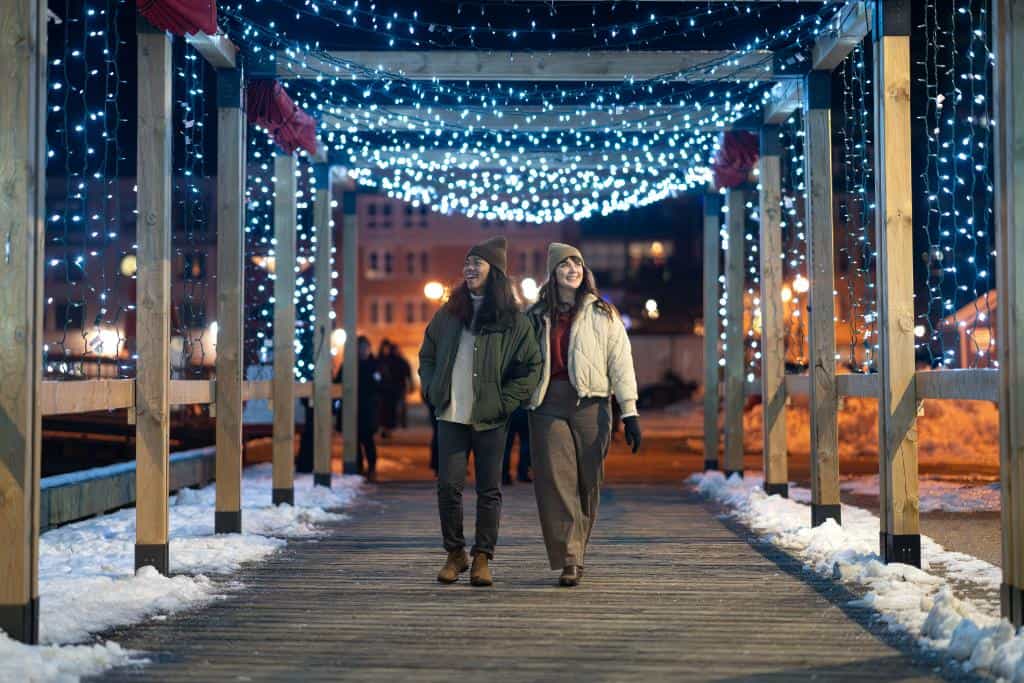
6/ Theatre Tour
From award-winning productions to summertime theatrical performances in open-air settings, rediscover your love of live entertainment when you visit a performance in one of our many theatres located throughout Nova Scotia. Highlights may include Two Planks & A Passion Theatre, Festival Antigonish Summer Theatre, Shakespeare by the Sea, Theatre Baddeck, Ship’s Company Theatre, Chester Playhouse, Neptune Theatre, and more.
Region: Province-wide
Dates: One week TBD (July/Aug)
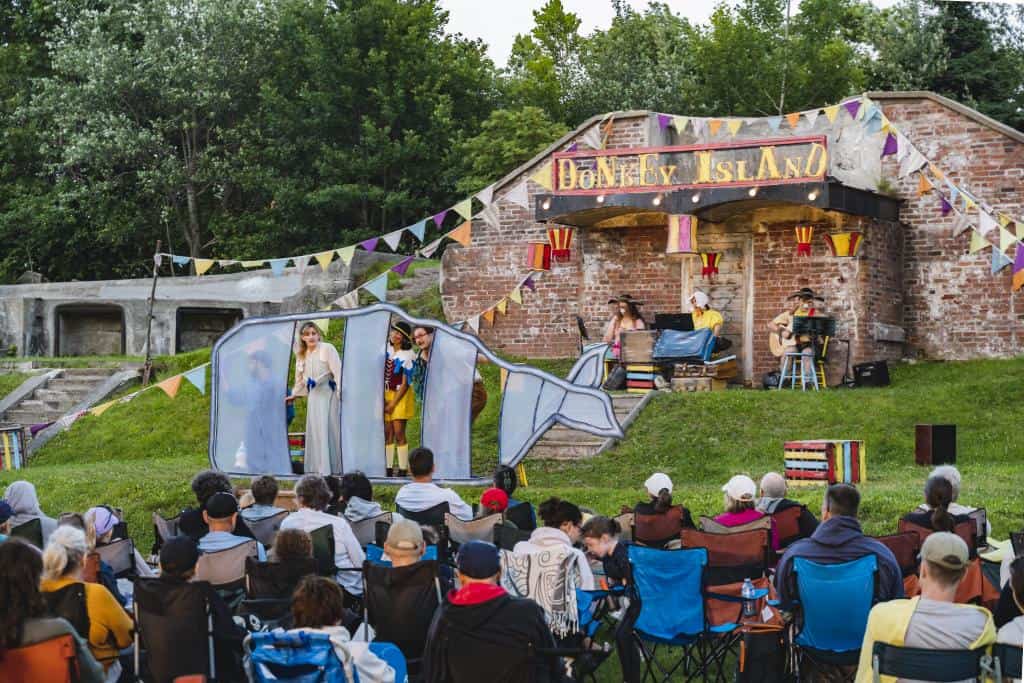
7/ Serene and Pristine
Pristine wilderness, historically-themed attractions, authentic fishing communities, and beaches stretching as far as the eye can see offer explorers an array of off-the-beaten-path adventures on Nova Scotia’s Eastern Shore.
Ocean adventures include surfing at Lawrencetown Beach, kayaking around the 100 Wild Islands, clam digging on the expansive mud flats of Clam Harbour with a fourth-generation clam digger, hiking the beautiful coastal trail system at Taylor Head Provincial Park, beach hopping and more. Beyond pristine wilderness and beaches stretching as far as the eye can see, the Eastern Shore is also home to some amazing culinary adventures, from cookhouse meals at Memory Lane Heritage Village to the house specialty planked salmon at Liscombe Lodge to dining at the award-winning DesBarres Manor Inn, where the chef uses fresh ingredients from the Inn’s gardens and local producers to create seasonally-inspired menus.
Region: Eastern Shore
Dates: One week TBD (July/Aug/Sept)
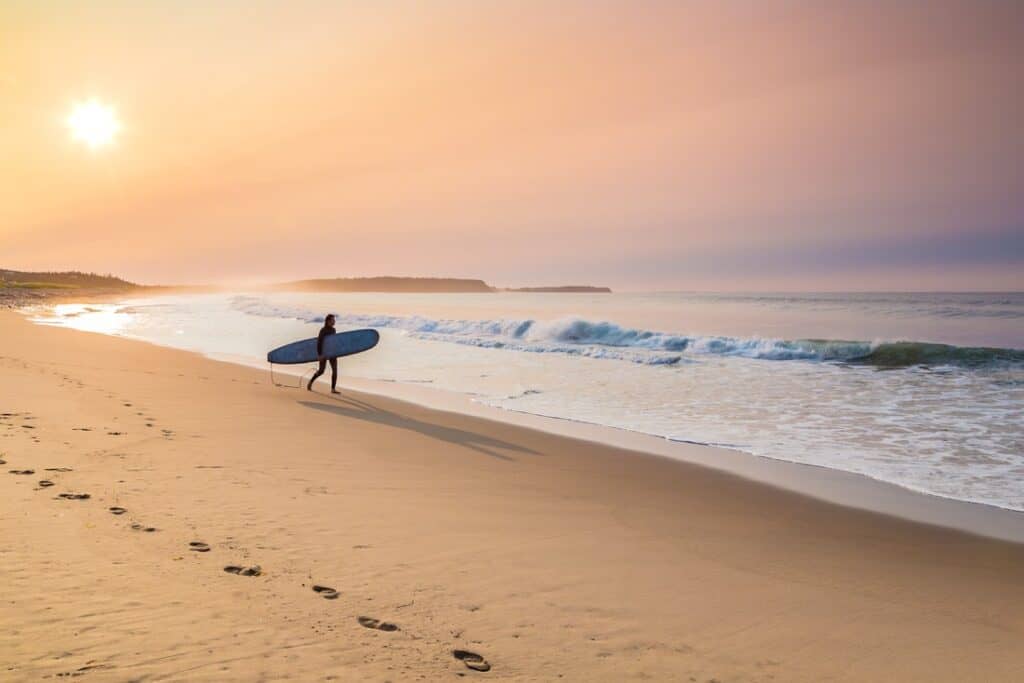
8/ Explore Nova Scotia’s African Heritage
The story of Black Nova Scotians is a rich tapestry. Since the 1600s, diverse groups including the Black Loyalists, Jamaican Maroons, Black refugees of the War of 1812, and Caribbean immigrants, established communities across Nova Scotia. Connect with the rich history of African Nova Scotian culture by visiting these museums and cultural centres.
Travel across the province to visit the various sites that weave together the story of our African heritage, such as the Black Loyalist Heritage Centre, Black Cultural Centre, Africville Museum, Halifax Citadel National Historic Site, Maritime Museum of the Atlantic, Fortress of Louisbourg National Historic Site, Viola’s Way, Africentric Heritage Park, Mathieu da Costa African Heritage Trail, etc.
Region: Province-wide
Dates: One week TBD (July/Aug/Sept)
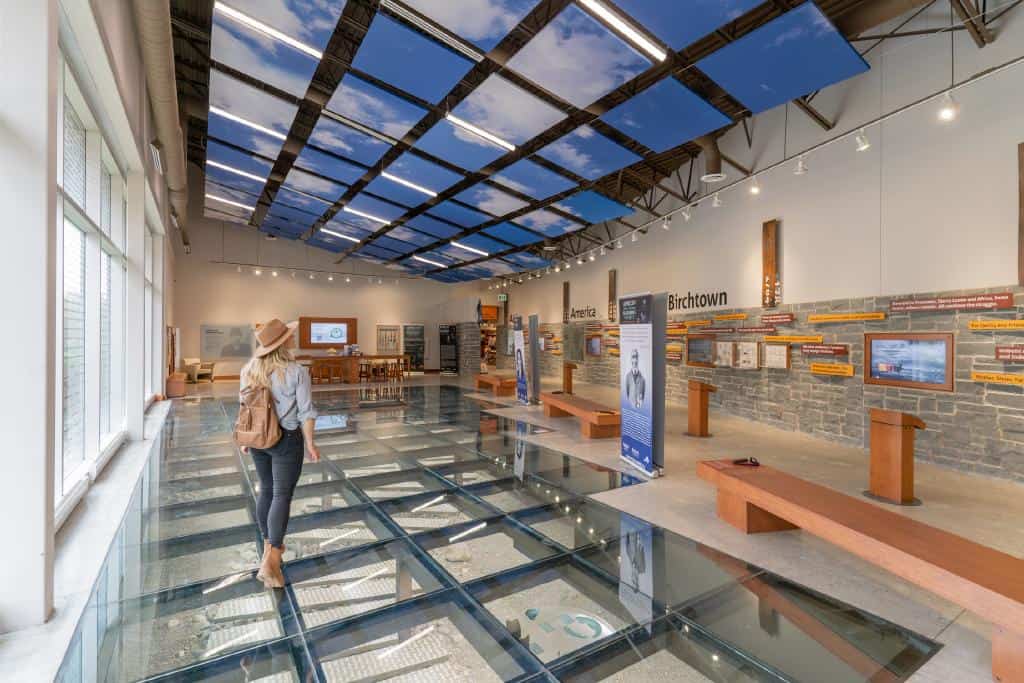
9/ Historical Escapes in Halifax
History buffs can immerse themselves in the fascinating cultural, maritime, and military heritage of a town founded in 1749. Halifax was a key player in many armed conflicts, including the War of 1812. These struggles hit too close to home during World War I, when a French munitions ship exploded in the harbour after colliding with a Belgian relief ship, causing the Halifax Explosion, which killed 2,000 and injured another 9,000. The Halifax Explosion was the largest man-made explosion until the nuclear bomb (discover more on the Halifax Explosion along with Halifax’s connection to the Titanic when you visit the Maritime Museum of the Atlantic on the Halifax Waterfront).
Throughout the 18th and 19th centuries, British and Canadian military forces constructed forts and batteries to protect the city of Halifax and its harbour. The fortifications were initially built to protect the British Naval Base from attack by the French, although many continued their military functions well into the Second World War. Five of these historic fortifications, known collectively as the Halifax Defence Complex, are now national historic sites and fascinating local attractions owned and operated by Parks Canada. Explore each of these sites in depth to learn the entire connecting story: Halifax Citadel, Georges Island, Fort McNab, Prince of Wales Tower, and York Redoubt. These forts were crucial overseas naval stations for the British Empire that guarded the Harbour from the 18th century to the Second World War.
Region: Halifax
Dates: One week TBD (July/Aug/Sept)

10/ Lighthouse Road Trip
Nova Scotia is home to over 160 historic lighthouses, and it’s not surprising that Nova Scotia has the largest number of lighthouses of any province in Canada, given our thousands of kilometres of coastline. Lighthouses are a common sight along the seacoasts and remain an important symbol of the past and beautifully highlight our picturesque coastal landscape. 53 of these lighthouses are accessible to the public, so you are invited to hop in a car and visit some of our most famous – and lesser-known – iconic symbols around Southwest Nova Scotia.
Highlights include:
- Take a thrilling helicopter journey over the city of Halifax and to Sambro Island, home to the oldest standing and operating lighthouse in the Americas. As part of this Heli-Picnic experience, indulge in Nova Scotia bubbly on a private beach, explore a secluded cove and enjoy a locally sourced tasting picnic on the island.
- Peggy’s Cove Lighthouse, also known as Peggy’s Point Lighthouse, is one of Nova Scotia’s most well-known lighthouses and may be the most photographed in Canada.
- The Port Medway Lighthouse is now dormant, but it is still in its original format, having been built in 1899. It was automated in 1967, at which time they changed the light from red to green. The lighthouse itself was decommissioned in 1987, and the lighthouse is now surrounded by a picnic park full of interpretive panels describing the maritime history of the area.
- The Sandy Point Lighthouse is the only one you can walk to at low tide across a sand bar.
- The Seal Island Lighthouse Museum is where visitors can tour a five-story, 35 ft tall replica of the original 60 ft lighthouse whose beacon still guides mariners from Seal Island (which is located approximately 18 miles offshore). Inside the museum are numerous artifacts from the local area chronicling the lives of local lighthouse keepers and the area’s rich seafaring history. A panoramic view of Barrington Bay is visible from the top of the lighthouse museum.
- Cape Forchu Lighthouse is a unique “apple core” lighthouse and the tallest one in Nova Scotia which visitors can climb to the top for spectacular views or tour through the intact lightkeeper’s dwelling open to the public.
- The Church Point Lighthouse isn’t a true lighthouse anymore, but it’s a place where light is shed nonetheless. The lighthouse stood for close to 120 years, but it was eventually made obsolete, even when unmanned and automated. Finally swept away in the early 2000s, the Université Sainte Anne built a replica on the site to present marine biology research about the area. Part research facility, part museum, and part birdwatching destination, this beautiful building allows visitors (Anglos and Francophones alike) to get a closer look at the life surrounding Church Point.
Region: Halifax; South Shore; Yarmouth & Acadian Shores; Annapolis Valley
Dates: One week TBD (July/Aug/Sept)

11/ Nova Scotia by the Pint
Over the past decade, Nova Scotia has sown some 70+ breweries across the province, from the Southwest Acadian Shores to Cape Breton Island. You’ll find them in historic fishing villages, rural farming communities and the cosmopolitan capital of Halifax. Instead of shoehorning dozens of stops into a single beer-focused itinerary, we’ll send you on a custom-tailored itinerary to discover your next favourite brewpub, lager or IPA that will include Halifax and the Southwestern loop of Nova Scotia.
Region: Halifax; South Shore; Yarmouth & Acadian Shores; Annapolis Valley
Dates: One week TBD (July/Aug/Sept)

12/ Nova Scotia: Your Ocean Playground
In Nova Scotia, you’re never more than 60 kilometres from the ocean. Make the most of it with these incredible coastal adventures:
- Nova Scotia is famous for our beaches – not just for quantity, but for how many different types line our 13,300 kilometres of coastline.
- Many don’t realize that Nova Scotia offers up some of the best surfing on the East Coast – but don’t take our word for it, experience for yourself by taking a surfing lesson and learning how to “hang 10” on your own.
- Kayak along the Atlantic coast, winding in and out of inlets and along the islands of the South Shore.
- Summer and early fall are the best times to go whale watching. Head out on a tour in the Bay of Fundy where, if you’re lucky, you’ll spot a few of the up to twelve species of whales that visit the waters off Nova Scotia each year.
- Harbour Rocks and Port Joli Head Trails are just a few of the hiking trails in Kejimkujik National Park Seaside that lead you to pristine, white sand beaches.
- The only experience of its kind in Canada, go land sailing with ReWIND Adventures on Mavillette Beach
- Experience the sights, smells and sounds of sailing on a Grand Banks fishing schooner! Nova Scotia’s iconic Bluenose II welcomes passengers on board for 2-hour harbour cruises twice daily in Lunenburg or Halifax.
Region: Halifax; South Shore; Yarmouth & Acadian Shores; Annapolis Valley
Dates: One week TBD (July/Aug/Sept)

13/ Upscale Nova Scotia
While well-known for its rugged coastline, picturesque towns, and extremely hospitable people, many first-time visitors to Nova Scotia are pleasantly surprised to learn that Canada’s second smallest province also offers an array of unique luxury lifestyle and travel opportunities. That uniqueness comes from its rare blend of natural beauty and world-class amenities, as well as its world-class dining and shopping.
Highlights for this visit may include (but are not limited to):
- 5-star accommodations such as MUIR Halifax, Fox Harb’r Resort, The Inn at Grand Pré, Oceanstone Resort, Trout Point Lodge, etc.
- Hydrothermal spa experience.
- Unique culinary experiences.
Region: Halifax; South Shore; Northumberland Shore
Dates: One week TBD (July/Aug/Sept)

14/ Ultimate Nova Scotia Foodie Tour
It may be Canada’s second-smallest province, but Nova Scotia thinks big when it comes to food and drink! With a coastline that stretches for hundreds of kilometres, a seafood industry that is as legendary as its rolling terrain, and a great wine scene, ‘New Scotland’ has all the elements needed for an epic culinary road trip. Pack your lobster bibs – things are going to get messy!
Definite must-haves include:
- Donairs, the official food of Halifax.
- Maple syrup … authentic or in variations such as cookies, coffees, cakes and more.
- Barrington may be the Lobster Capital of Canada, but lobster is available fresh across the province year-round – indulge in a traditional lobster supper plus unique lobster dishes like creamed lobster, lobster bake, lobster poutine, lobster rolls and The Lunenburger at the Grand Banker Bar & Grill – a hamburger topped with lobster claws and tarragon butter sauce and topped with a bacon-wrapped scallop.
- Fish and chips (with haddock being our fish of choice!), fish cakes and fish chowders galore.
- Acadian-style cuisine such as Rappie Pie or fricot.
- Digby is the Scallop Capital of the World, and while you’ll see them on various menus around the province, there’s nothing quite like eating them the day they were harvested out of the Bay of Fundy.
- The Annapolis Valley is well known for its bountiful agricultural harvests and growing wine industry. Visit one of the many wineries in the region for tastings, tours or lunch on a patio overlooking a vineyard to learn about Nova Scotia’s appellation white wine, Tidal Bay.
- Pictou County is known for its pizza. The people that live there are obsessed with it and people come from all over just to try it! The biggest difference with Pictou County pizza when compared to regular pizza is that it has a brown sauce instead of red. This special pizza sauce is made from typical ingredients like tomatoes, onions and spices but then also uses chicken broth and flour, which gives it its brown colour.
- And don’t forget other local favourites to be found at farmer’s markets, and food trucks such as wild blueberries, snow crabs, oysters, hodge podge, Moon Mist ice cream, oatcakes, deep fried pepperoni … so many treats to be discovered and devoured!
Region: Halifax; South Shore; Yarmouth & Acadian Shores; Annapolis Valley; Northumberland Shore
Dates: One week TBD (July/Aug/Sept)

15/ UNESCO Nova Scotia
Did you know that Nova Scotia boasts six UNESCO-designated sites? Many are so close together that you can explore them all within a few days. Spend a week discovering what makes Nova Scotia such an important cultural, historical and educational gem!
- A UNESCO Global Geopark designation celebrates globally significant connections between geology, local communities, culture, and nature. At the Cliffs of Fundy Geopark, more than 40 impressive geosites are located within a 165 km drive from Lower Truro to Apple River where visitors are welcomed to explore this stunning section of the Bay of Fundy coastline. See cliffs towering 300 feet over the world’s highest tides and stop into vibrant communities throughout the Cliffs of Fundy Geopark. Home to a variety of parks from Five Islands to Cape Chignecto Provincial Park, you’ll find hiking trails, island views, sea stacks and unique rock formations – all making a great backdrop for picnics and photos.
- Joggins Fossil Cliffs is Canada’s 15th UNESCO World Heritage Site. At Joggins you will be able to observe and traverse up to 15 kilometres of magnificently exposed layers of rock revealing the world’s most complete fossil record of life in the “Coal Age” when lush forests covered Joggins and much of the world’s tropical regions, 300 million years ago. Visitors will find fossils on the beach that have fallen from the cliffs, or view the spectacular sandstone layers that contain the fossilized remains of a 300-million-year-old forest.
- The Landscape of Grand Pré became Canada’s 16th World Heritage Site, inscribed by UNESCO, in 2012. Take a guided tour of the Grand-Pré National Historic Site to learn more about the Acadian settlement of Grand-Pré, the Expulsion and the Acadian memorials.
- Old Town Lunenburg UNESCO World Heritage Site is one of only two urban communities in North America designated as a UNESCO World Heritage site. Considered to be the best surviving planned British colonial town in North America, you can still see the tall ships moored off the port and hear the smith’s hammer, while guided tours tell tales of lives lost on the ocean, and the spirits that return to haunt the living.
Region: Annapolis Valley; Bay of Fundy; South Shore
Dates: One week TBD (July/Aug/Sept)
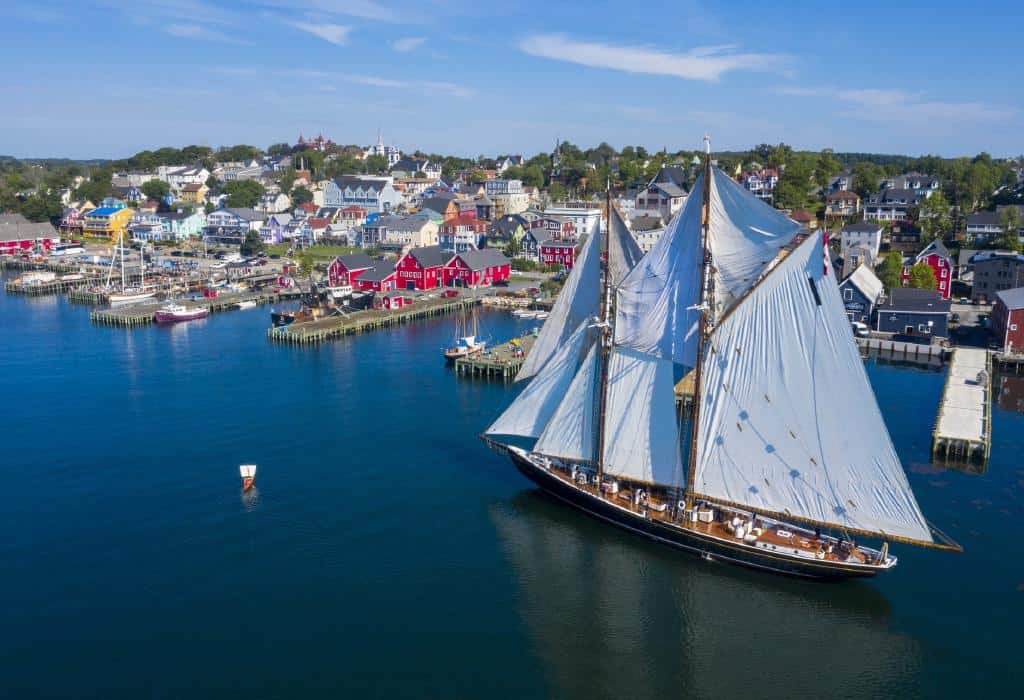
16/ Unusual Stays
Nova Scotia isn’t your typical vacation destination and where you stay when you’re here doesn’t have to be your typical lodging either. From cozy wilderness cabins to glamping (glamorous camping) in yurts, domes, oTENTik structures, train cabooses and more, Nova Scotia is home to many exciting and unusual places to spend the night!
Options may include:
- Moxy Hotel Halifax
- White Point Beach Resort Oceanside Treehouse
- PEBs by the Sea Dome
- Cabane d’Horizon
- oTENTik @ Grand Pré National Historic Site
- Train Station Inn
- Authentic Seacoast Yurts
Region: Province-wide
Dates: One week TBD (Aug/Sept)

17/ Non-Traditional Winter Destination
Winter days may be a bit shorter, but the list of things to see and do in Nova Scotia is only getting longer.
Winter is a prime time to explore Nova Scotia’s great outdoors, from skiing (and riding Atlantic Canada’s only Gondola at Cape Smokey), to skating (Halifax’s Emera Oval is the largest outdoor, artificially refrigerated ice surface East of Quebec City, equivalent to the size of three NHL hockey rinks!), to fat biking, snowshoeing and surfing, winter weather doesn’t put a damper on getting outside and experiencing our great outdoors. From outdoor adventures and exclusive tours and tastings to cozy accommodations, Nova Scotia just might become your favourite non-traditional winter destination!
Region: Province-wide
Dates: One week TBD (Jan, 2025)

